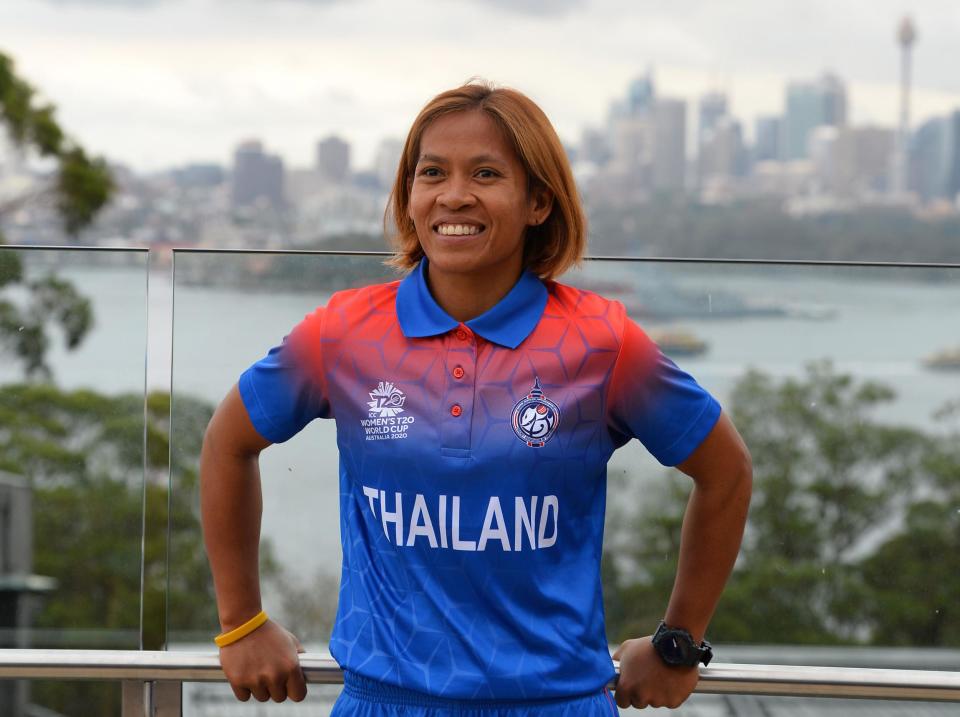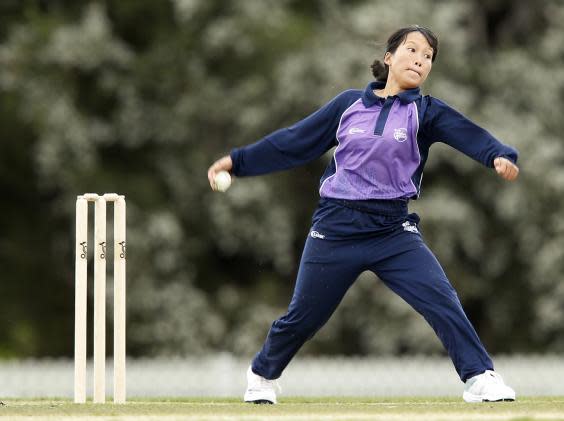What Thailand’s unlikely Twenty20 success tells us about what we must do to grow cricket

On a typically hot and humid November day in 2015, two ICC employees are sat in the stands of the Thailand Cricket Ground in Bangkok.
The game being played in front of them is the first of the qualifying tournament for the 2016 World Twenty20 in India. The result was something of a formality: Bangladesh posting 105 for six then Thailand in reply eventually finishing on a torturous, if predicable, 32 all out in 15 overs.
Bangladesh went on to be one of two of the eight teams to qualify, alongside Ireland – to great satisfaction. The former would push women’s cricket forward in an already thriving hotbed; the latter a chance for one of the better sides outside of the “conventional” international infrastructure to further establish themselves.
As far as Thailand were concerned, well, the less said the better.
They would finish second-bottom by virtue of beating the Netherlands in a consolation match. The few takeaways those employees took with them back to Dubai were not particularly flattering, such as batters who could not hit the ball off the square or rotate strike. They had little game sense coupled with, as it was put altogether frankly, a distinct lack of physical prowess. In the briefest of debriefs that followed back at HQ, at no point were they pegged as a side to watch in the future. Low-quality club cricket, so the descriptor went.

Yet here we are, four years on, at the eve of a Twenty20 World Cup that will be Thailand’s maiden appearance in an ICC competition. A debut earned after winning an Asia qualifier and then, this time, finishing second in the final qualifying hurdle last year after topping a group which included Ireland, Netherlands and Namibia. By the admission of those on the ground in Australia, they have caught the ICC by surprise.
It is why, regardless of what happens over the coming weeks in Group B against England, South Africa, West Indies and Pakistan, the powers that be will be taking further notes on what is, without question, the most intriguing case study in modern men’s and women’s cricket. This is not your usual story of “minnows” (as the empty detractors will surely dub them) on the rise.
The tale of cricket in Thailand begins around 2008, when age-group schemes for boys and girls across 14 different provinces were put in place. But the big leap came in 2013 when the women’s side qualified for the inaugural T20 World Cup qualifying tournament.
It was around this time local decision-makers landed upon a change of tact. And while the ICC do not have a blueprint they hand out to emerging teams, the governing body certainly don’t advise what Thailand picked as their next move.
In short: there was a distinct shift in focus away from mass participation and more effort placed into the top of the pyramid. To do this, they began recruiting by going into schools and universities to recruit from other sports, such as their current captain, Sornnarin Tippoch – a former softball player who was only introduced to the game at the age of 20.
When it became apparent the women were closer to international standard than the men, they refreshingly saw them as the national team to push. Of the 15-person squad, 11 are contracted with Thailand Cricket while none of their male counterparts have any such deal.
Also flying in the face of ICC recommendations is their formal alignment with the state. In 2007, Thailand’s government officially recognised cricket, ensuring it was part of multi-sports events in the country and also placing it in schools and other institutions. This close association with the sports ministry, and indeed the country’s Olympic committee, has been integral – which is all the more amusing when you consider a nation like Sri Lanka, whose political affiliations have resulted in countless reprimands and even withholding of funds.
The ICC have helped where they can, offering financial support regularly and, last December, providing the means for three players – Tippoch, Suleeporn Laomi, a talented leg spinner, and Naruemol Chaiwai, their leading batter – to embark on a reconnaissance mission to Australia for a couple of weeks. There they trained, shared accommodation and socialised with the world’s best.
They have also taken advantage of the ICC granting official international T20 status for all fixtures between member nations, racking up as much match-experience as possible. Last year no one played more than their 25 T20is.
Every January they host their own T20 Blast tournament, though this year they changed the format to 50-overs to prepare for the 50-over World Cup qualifier which takes place later this year.
That dexterity in purpose also extends to personal development. Among basic structures put in place to ease balancing cricket commitments with work and education, the players are taught English with a view to giving them regular placements overseas. In Harshal Pathak they have a coach who turned India’s skipper Harmanpreet Kaur from glancer to destroyer and, with that experience, developed an appreciation for the individuals among a collective. His sessions are hard yet relaxed and never for the sake of it.
But what makes Thailand’s rise all the more heartening is how they have managed to avoid the pitfalls that afflict developing cricket nations: a loss of identity. Because the game has grown from insular beginnings, coaches and the theories they consult are often from the same conservative source. As a result, the sport – even in most vibrant countries – becomes irreparably homogenised.
It is why one of the biggest issues facing European sides is that they are too predictable. And why, ridiculously, a country like Zambia, who showed such aptitude to the game a decade ago has struggled to continue on because, as one insider puts it, “no one really goes to Zambia on gap years or volunteer schemes to spread cricket as they do in places like Rwanda or Mozambique”.
Around eight years ago, the CEO of Cricket Association of Thailand, Mohideen Kader, realised the country’s best chance of a sustainable cricket team was to get ethnic Thai players involved at every level instead of relying on ex-pats. In turn, the current squad are regarded as second-generation “indigenous cricketers”.
Indeed, the majority of the women out in Australia are from rural areas which, according to local wisdom, means they are strong-willed and mentally robust. There is also an embrace of family culture carried through wherever they are. Meals are eaten together and, in the lead-up to tournaments or fixtures, the players all stay in the same house. Simple things that not just help team ethos but are a reminder of your identity and who you are representing back home.
In a sport like cricket, this will lead to some unpalatable moments. Those involved in their media arrangements have become frustrated at the coverage of this team, which they believe has been patronising. They may also feel looked down upon as a result of being so proudly Thai: the result of a very Western trait where being English-speaking is a measure of social development.

But when this World Cup begins, they will be authentic. They are all-action in the field with a quickness across the turf that they will also look to exploit between the wickets on Australia’s bigger grounds. And when it comes to the game’s two main crafts, they will impart their own flair.
Take their batting. As they have not yet shown an aptitude for big-hitting, a few of their players are taking guard outside off stump to better access areas behind square on the leg side – almost unheard of. Then there’s the seam of Chanida Sutthiruang, the emerging cricketer of 2019, whose action sees her primarily bowl leg cutters. Laomi’s eye-catching wrist-spin is also something to keep tabs on.
Granted, Thailand’s women will probably find the next fortnight a struggle when it comes to results. But they will continue to earn friends, though, who will quickly turn to activists.
It was telling that during Tippoch's time in Australia in December she endeared herself to Charlotte Edwards, the England legend who is a coach at Adelaide Strikers. “Honestly, after meeting Tippy, I realised what true love for the game really is,” she said with passion. “We have to encourage them to go on. It’s a great story but it’s also just great for cricket as a whole. We should focus on how can we get it to continue, for them and everyone else.”
Indeed, Thailand are a lesson of how this game can change for the better; of the meritocracy T20 allows for and how it is allowing the game to grow. How women’s cricket continues to strive ahead, at pace, in every outpost.
Australia will probably win the T20 World Cup, and India, New Zealand and perhaps England may push them close. But Thailand have already shown that regardless of what cricket’s self-appointed gatekeepers would have you believe, the best way to play and embrace the game is to do it your own way.

